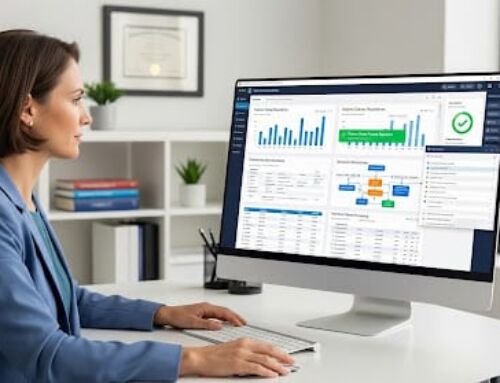
At least 60% of businesses lack efficient methods for monitoring employee compliance training, and many struggle to keep up with compliance and regulatory changes. This is the primary reason healthcare businesses adopt compliance learning management systems (LMS). A centralized LMS for compliance training can offer custom learning paths, real-time training tracking capabilities, and cost-effective employee training.
Understanding and adhering to compliance standards is essential, considering compliance regulations are often unpredictable and changes can occur frequently. A compliance training management system is a powerful tool that helps to streamline training processes, mitigate the risk of noncompliance, and simplify training monitoring.
Along with the variety of features the right LMS presents, there are four primary reasons why your company can’t afford to overlook the importance of using an LMS designed for compliance.
What is the Purpose of a Compliance Learning Management System?
Aside from remaining aware of compliance obligations, using a compliance training management system helps businesses maintain high-quality care. With increased accessibility to training materials, training material tailored to staff, and a system that scales with the business, you can strengthen your staff’s capability to provide quality care.
A compliance learning management system is meant to provide a centralized location for training materials to simplify, enhance, and streamline the delivery of training. Instead of opting for manual training processes that could waste man-hours and cause more administrative burdens, adopting an LMS is simpler and more cost-effective.
Understanding Why Your Business Needs This Technology
Without an LMS, healthcare businesses are often exposed to inefficient tracking methods, duplications of training elements, and difficulty navigating individual training paths.
1. Streamlined Risk Mitigation
Incidents of noncompliance can lead to hefty fines (an average of $10.93 million per incident for Health Insurance Portability and Accountability Act noncompliance alone), legal issues, and reputational damage. A compliance LMS helps mitigate these risks by ensuring all employees have access to relevant training materials while keeping them updated on compliance changes.
2. Tracking and Reporting
Being able to track employee compliance training in real time helps identify gaps in training and reduce turnaround time from training initiation to completion. Tracking and reporting features are also popular among compliance officers and training managers. Generating reports helps compliance departments prepare for internal and external audits.
3. Access To CE Credits
Having access to continuing education (CE) credits and certifications can help empower existing teams by allowing them to become more knowledgeable and skilled in their profession. This feature helps to keep your staff current regardless of regulatory changes in the industry and updates them on industry best practices that apply to their role.
Additionally, having an LMS that offers CE credits is a simplified way to provide staff with personal development opportunities.
4. Enhanced Flexibility and Accessibility
Being able to access training at any time and from multiple devices is generally more effective in achieving a high rate of completion. Increased flexibility also helps enhance resource allocation efforts and can be ideal for healthcare organizations with geographically separated teams.
Overall, with an LMS designed for compliance training, training managers can expect more manageable training, and employees can expect training that is less disruptive to their schedules and daily tasks.
Adopting the Right Compliance Training Management System
Using a compliance learning management system streamlines the operation of your compliance training program. Instead of opting for manual processes that waste time and money and strain your resources, choose an automated alternative. With the right LMS, your organization will have access to a cost-effective training solution, centralized training materials, and an easier way to customize learning experiences.









